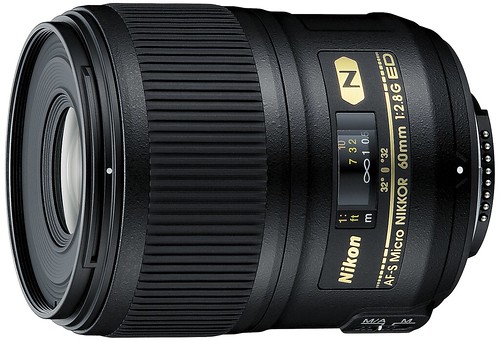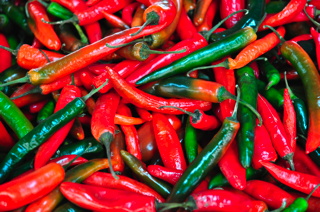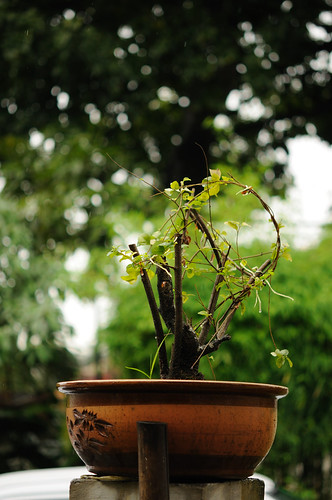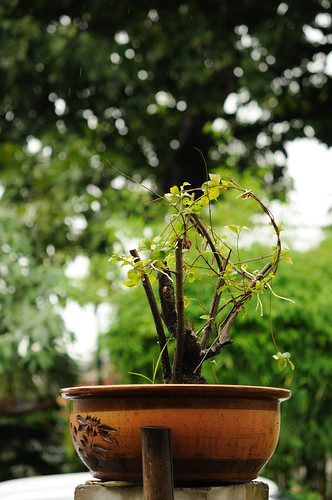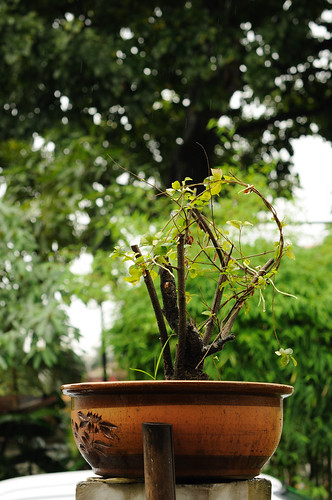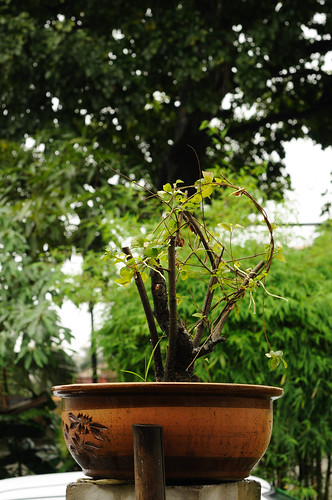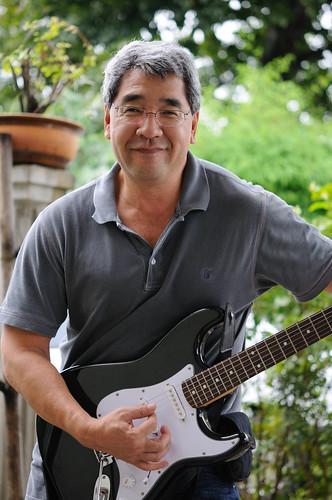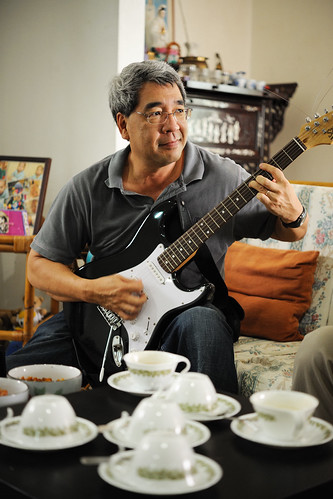This is the Nikon 60mm f/2.8G ED AF-S Micro-NIKKOR macro lens, which was announced on Jan 29, 2008:
Download the Nikon 60mm f/2.8G AF-S Micro-NIKKOR Manual (PDF link).
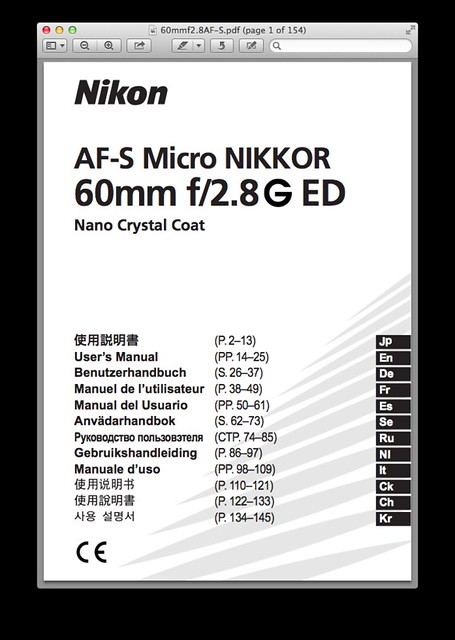
Sample photos
Recent additions
In this long-term review of the Nikon D7100, DC Watch at Impress posted up several full-resolution photos taken with the 60mm macro lens. Other lenses used were the Nikon 16-85mm VR and Nikon 28-300mm f/3.5-5.6G ED VR.

A portrait
Rigel Bowen of DCCPhotography mounted the 60mm Micro-Nikkor on a Nikon D700 to photograph this portrait of a lady.
Chillies, shot with a Nikon D5000
This is one of Nikon’s official Nikon D5000 photos — the entire gallery is here.
Click on the thumbnail below to open up the full-resolution image in a new browser window, or just right-click to save to your hard drive.
Full-sized photo of forlorn ole Maxi the dog
This was just a grab shot of my parents’ pet cross-bred miniature pinscher. The image was shot with the Nikon D90 in RAW mode, and a straight conversion to JPEG was done in Nikon View using the highest quality setting.
Click the image to view in full-resolution.
Full-sized photo of a Heliconia psittacorum flower
The photo below (click for the full-resolution version) was taken with the help of a Gitzo GT1931 tripod, which was used to stabilize the D90 plus 60mm AF-S macro.
The RAW file had gone through edits (exposure, brightness, levels and contrast adjustments to make sure olors and sharpness pop without blowing out the red channel) in Apple Aperture, and the resulting JPEG was exported using the highest quality setting.
My review and test photos
I bought this lens on December 22nd, 2008 to replace my Nikon 50mm f/1.4D AF.
The Nikkor 50 / 1.4 was great in the bokeh department, but biting sharpness wasn’t one of its strengths.
In purchasing the 60mm AF-S Micro-Nikkor, I was looking for a lens that could yield images with excellent sharpness throughout the frame at wide-open aperture of f/2.8 and when stopped all the way down to f/22.
I’d say this lens delivers what I want in spades.
The bokeh on this lens isn’t unpleasant (and nowhere near as harsh as what the Nikon 50mm f/1.8D AF would give you when stopped down to f/2.8 or smaller), but don’t expect Leica or Zeiss-like creamy and dreamy bokeh. The images below (which I took with my Nikon D90) show what the bokeh looks like at f/2.8, f/4, f/5.6 and f/8. Clicking on the photo brings you to the full-sized version, which were converted from the RAW / NEF files using Nikon Capture NX 2 with no further edits.
f/2.8:
f/4:
f/5.6:
f/8:
To get an idea of what a half-body portrait with some background foliage would look like as far as bokeh goes, here’s one of my buddy, John Ishii, playing the guitar.
Another f/2.8 shot of John Ishii, this time taken indoors at ISO 800 (edited in NX2) with a Nikon D3X, shows front and rear bokeh quality and characteristics.
You can clearly see the vignetting at the upper left corner, something that you’ll have to live with if shooting at wide apertures on Nikon’s FX (full frame) digital SLR cameras.
Full-sized samples at LensBuyersGuide.com
This page at LensBuyersGuide.com has a number of full-sized Nikon 60mm f/2.8G AF-S images for download.
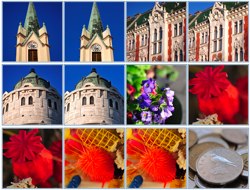
I like that the gallery has samples of architecture photography as it seems that the 60mm AF-S lens is able to capture sharp details of subjects at distance, even at full-open aperture of f/2.8.
Reviews
Nikon 60mm f/2.8: AF-S vs. AF-D versions
Are you trying to decide whether to get the newer Nikon 60mm f/2.8G AF-S or the 60mm f/2.8D AF Micro-Nikkor lens?
anotherMike posts a brief user review on why he prefers the new Nikon 60mm f/2.8G AF-S macro lens over the older 60mm f/2.8D AF version.
Here’s a summary:
- Photographs of subjects at a distance taken with the AF-S version are sharp. A common complaint with the older AF-D was that it was optimized for close-up photography, hence close-up images were sharp, but not when you’re shooting objects at a greater distance.
- The newer 60mm f/2.8 lens has better contrast and micro-contrast, meaning that tonal and textural differences are better delineated.
- Photos taken with the newer AF-S version have better dimensionality. Images look more “real” due to the better 3-D effect.
AF hunts with the Nikon D200
‘nomorepencils” reports in this post that the 60mm’s autofocus hunts when used with his D200.
Ken Rockwell’s Nkon 60mm AF-S Review
Ken’s piece on the Nikon 60mm AF-S macro is one of the best articles out there (I like the section with a brief history of Nikon’s macro lenses).
Interesting items from his review:
- There’s a lot of vignetting with this lens, especially noticeable on Nikon film cameras or FX (full-frame) camera such as the Nikon D3.
- The maximum wide-open aperture at 1:1 life-size magnification is only f/4.8.
- The 60mm AF-S has more pincushion distortion than the older 60mm f/2.8D AF macro lens. Even the Nikon 50mm f/1.8D AF has less distortion.
- Diffraction starts being visible at f/11 on the D300 and f/16 on the D3.
- The older 60mm f/2.8D AF gives an extra inch of working distance, which means the front lens element can be placed farther away from the subject for 1:1 magnification.
- The main advantage the new 60mm AF-S lens has over the older AF-D version is superior sharpness at all apertures, across the entire frame.
Grab a cup of coffee and a comfortable chair, and prepare yourself for a long read.
60mm AF-S review SLRGear.com
For a more technical review with lots of charts, refer to SLRGear’s review.
Juanjo Viagran’s brief user review and photos
This forum post has lots of photos of the 60mm AF-S lens itself, plus some sample images.

Interesting is Juanjo’s use of the retractable Nikon HR-5 rubber hood which seems to be more flexible in use than your old typically rigid lens hood. It’s the first time I’ve seen a photo of this hood on the internet.
Photos comparing the 60mm AF-S vs the older AF-D version of the lens also show that the lens barrel of the newer 60mm macro does not telescope. In other words, the length of the lens is fixed and won’t extend even when you perform close focusing. This is the reason why the AF-D gives an additional inch of working distance compared to the new lens (see Ken’s review for details).
If you had read through Ken’s review linked to above, you would have noticed that Ken doesn’t recommend this lens for 1:1-type macro shooting (bugs and the like). In Juanjo’s thread however, one recommended application of the 60mm AF-S is for food photography where extreme close-focusing is not required, but sharpness and a shorter focal length (so that the camera doesn’t have to be too far away from the food) are desirable.
Juanjo notes that the autofocusing speed on the AF-S version is so much faster than on the older AF-D. Bokeh also seems much better.
A bit more on the subject of flare in Nikon 60mm f/2.8G AF-S photos
grrrega likes the new Nikon 60mm macro lens, but finds that visible flare in images is a problem. Nevertheless, the lens is great to hold, has great AF (autofocus), captures a lot of detail, and is sharp regardless of whether the subject is near or far.
Standard / optional accessories and add-ons
The manual mentions the following included accessories:
The AF-S 60mm Micro-NIKKOR accepts filters with 62mm thread size, which means you’ll want to be looking at purchasing 62mm filters. Nikon also makes their own filters, namely 62mm Circular Polarizer II, 62mm Screw-On Soft Focus Filter and 62mm Screw-On NC (Neutral Color) Filter.
The full list of compatible accessories is available at Nikon USA.
Resources
Official Nikon AF-S Micro NIKKOR 60mm f/2.8G ED websites:
Nikon AF-S Micro Nikkor 60mm f/2.8G ED press release on DPReview.
Related
Nikon lenses — Main page.
